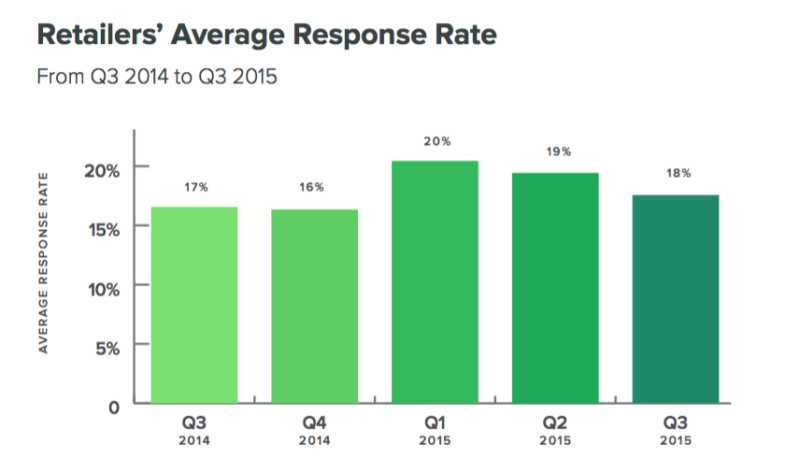Report: Bad Phone Experience Will Send 74 Percent Of Consumers To A Competitor
In the era of online reviews and social media, you’d think that customer service and customer loyalty would be a central focus of most brands and marketers. But they’re typically not, though one often hears lip service paid to these values. In reality, most industries deliver poor customer service. Yet negative customer service experiences can […]

In the era of online reviews and social media, you’d think that customer service and customer loyalty would be a central focus of most brands and marketers. But they’re typically not, though one often hears lip service paid to these values.
In reality, most industries deliver poor customer service. Yet negative customer service experiences can have a profound impact on customer retention, and ultimately, the bottom line. Companies with stronger net-promoter scores, for example, have a lower cost of customer acquisition. And the people behind the American Consumer Satisfaction Index argue that higher satisfaction scores are predictive of future consumer behavior.
With a few clear exceptions, such as Nordstrom, AMEX, Amazon and a few others, major US corporations have historically treated customer service as a regrettable cost of doing business. For years, call centers were shipped offshore to India or the Philippines, and recorded call routing and wait times were intended to discourage calls or send consumers to corporate websites for self-service.

Source: Sprout Social index report Q4 2015
Customer frustration then shows up in the form of negative reviews and critical social media discussion. All of this impacts brand perception, and eventually, the bottom line.
One example of the state of poor service is reflected in the recent Sport Social report that showed 80 percent of consumer inquiries on social media sites were being ignored by retailers. According to the data, no more than 20 percent of customer questions to retailers on social channels were answered. In Q3, it was 18 percent.
A recent study by call analytics company Invoca found, not surprisingly, that negative experiences with businesses over the phone will impact ROI and loyalty. The August 2015 survey of more than 2,000 US adults found nearly 75 percent were more inclined to choose a competitor after a negative phone experience, and 30 percent were more likely to leave a negative review.

Source: Invoca “state of the mobile experience” report (10/15)
As mentioned, call center processes and call flows were often designed for cost reduction and call avoidance by, among other tactics, imposing long hold times (“due to unusually high call volume . . .”). The Invoca study found that 53 percent of consumers will only stay on hold for five minutes or less.
Indeed, 50 percent of survey respondents said long hold times were one of their top customer frustrations. People also didn’t want to have to “repeat the same information to multiple representatives.” Yet this is routine with most large enterprise customer service calls.
I recently had to speak with three different departments at Chase to resolve a credit card fraud issue. I spoke to four people at Comcast to resolve billing errors and technical problems that were Comcast’s fault. United Airlines says that customer service inquiries (via email) will receive responses within seven to 10 business days. These types of customer interactions are simply not acceptable any longer. Yet most companies don’t directly see the “cost” of these negative customer interactions.
Conversely, the Invoca survey showed that good customer experiences over the phone can have a strong impact on sales and loyalty. Roughly 80 percent of respondents said they were likely or very likely to to become a repeat customer; and 60 percent said they were more likely to spend more on future purchases following positive call experiences.
Many small businesses often neglect to pick up the phone or return messages in a timely way. Yet data compiled by InsideSales.com show that 50 percent of consumers will do business with the company that responds to them first. Response times over the phone in calling back leads have a triple-digit impact on conversion rates.
As costly and time consuming as it is to deliver good service, it can translate into a virtuous cycle of improved word of mouth, lower acquisition costs, improved loyalty and increased sales. This may all seem obvious. But if it is, why isn’t customer service better?
Contributing authors are invited to create content for MarTech and are chosen for their expertise and contribution to the martech community. Our contributors work under the oversight of the editorial staff and contributions are checked for quality and relevance to our readers. MarTech is owned by Semrush. Contributor was not asked to make any direct or indirect mentions of Semrush. The opinions they express are their own.
Related stories
New on MarTech